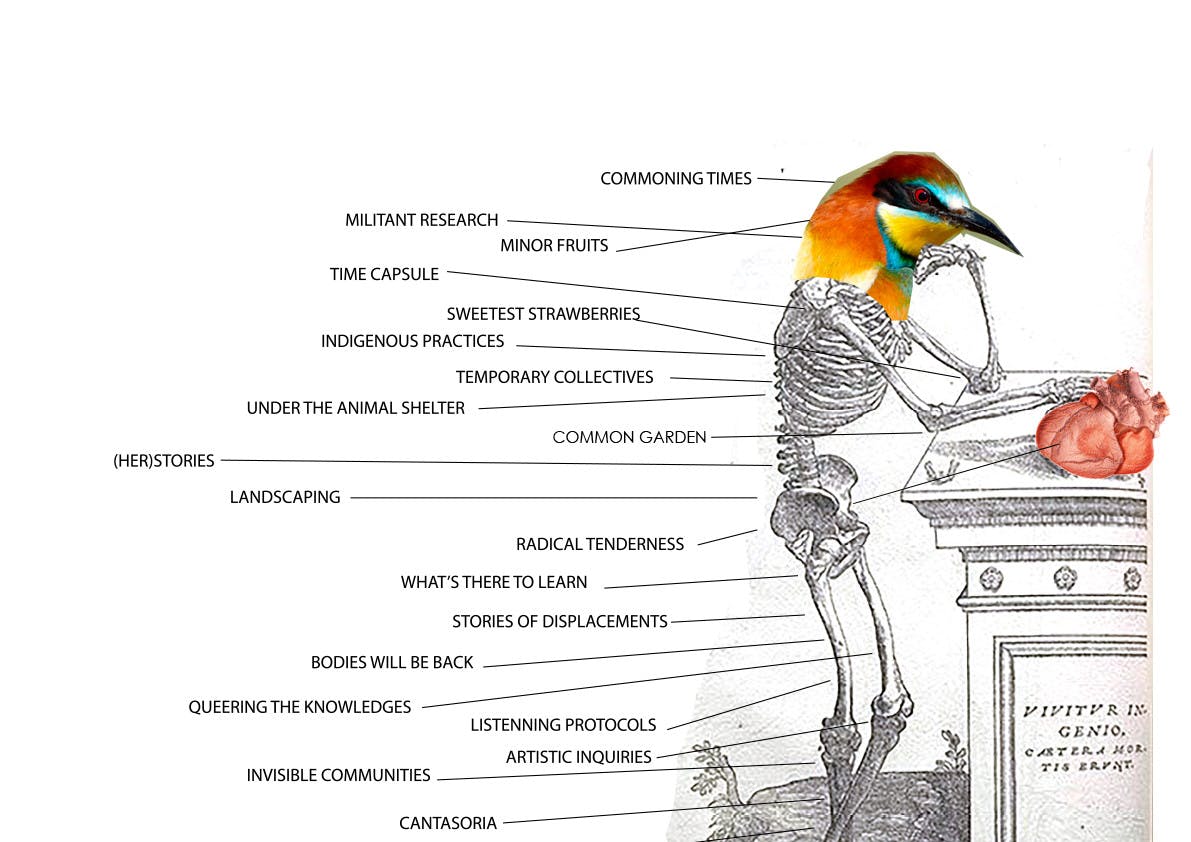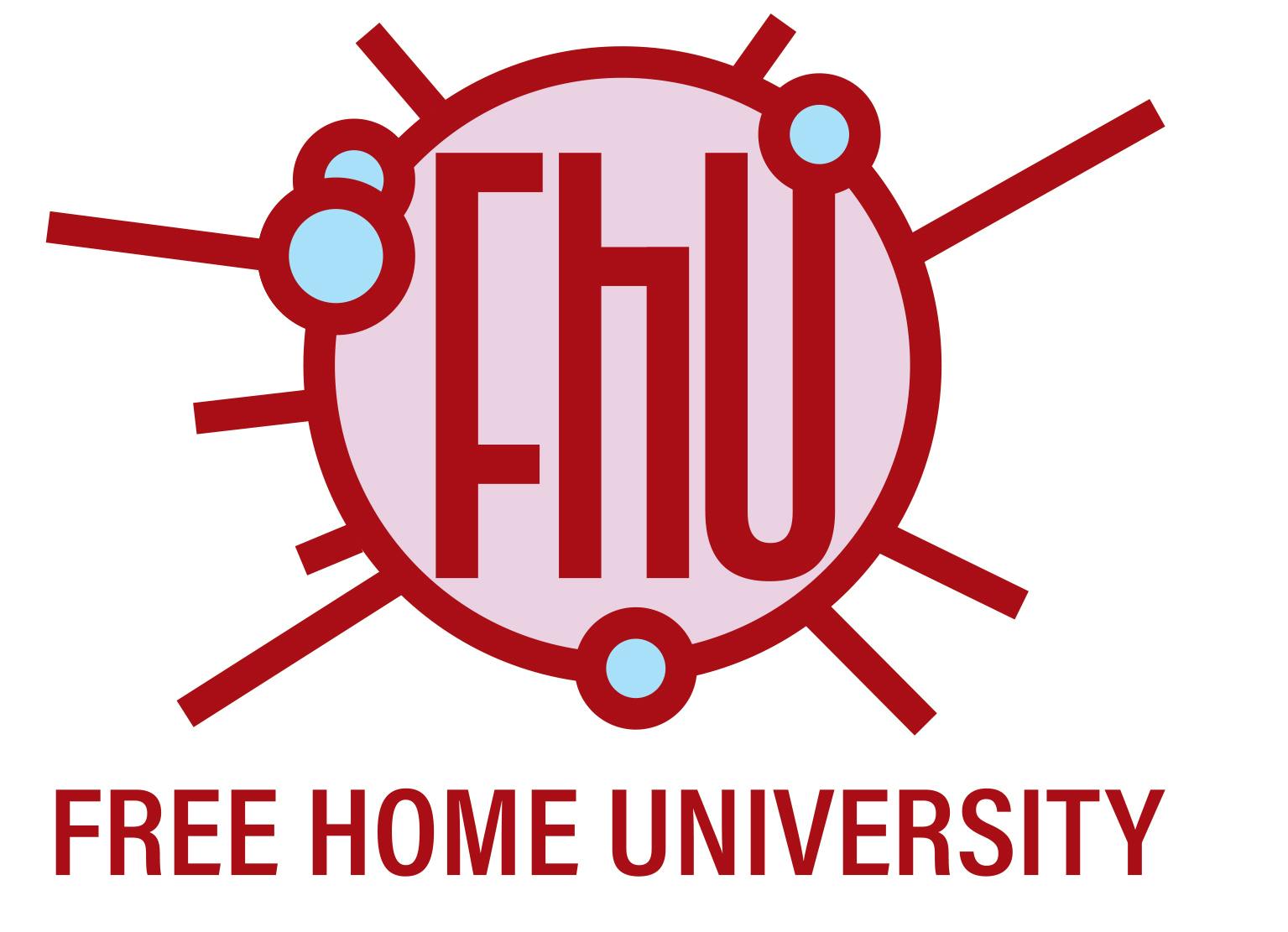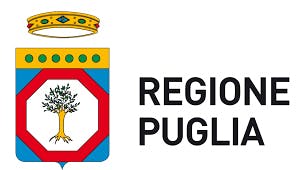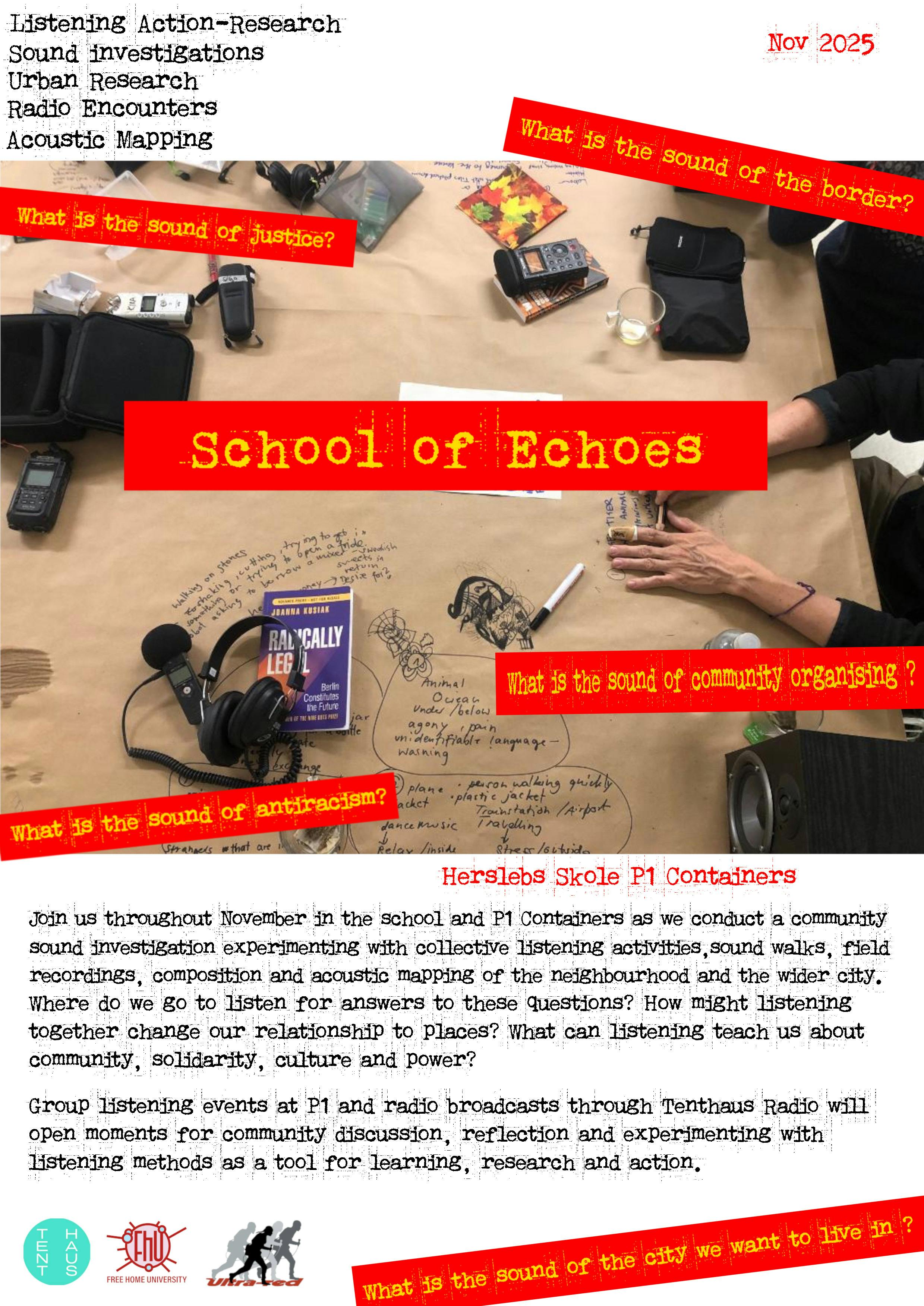Dark Matter Cinema Tarot

“How do we want to live together?”

— The first card on the left... I see a mother, a family... mother and children in a poor home... Yes, there is poverty there, some sort of deprivation but also simplicity and a sense of... dignity. It seems like a place where time has passed and has seen the passing of many layers of stories and histories. I also see a child playing an instrument, a flute. Maybe there is another mother too, holding a child in her arms... It could be a place where women live together with their children. There is scarcity but they seem tranquil… I don’t see suffering but I see poverty, maybe...
— It’s a mysterious card. With this door, and the frame of the door...
— Someone entering through a door is just the perfect beginning for us. A great dramatic way of starting to read the cards together.
— Yes, it's important for us to start with someone entering a space.
— But maybe the flute is a kind of invitation to exit the room...
— You mean to enter?
— No, to exit.
— Or to pass from one space to another. In fact I see two rooms...
— The woman standing seems to be waiting. And the child invites her to come into the second room, where the atmosphere looks more pleasant.
— I see the sunshine coming in.
— And perhaps the flute is a symbol of happiness, connection...
— Annunciation!
— I have three different visions here. The first is a phantom, a ghost. The second is related to a gypsy kind of situation. And the third is Maria Tsvetaeva, the poet, the way she was living during World War I...
— I see... two different spaces, and the door is crucial here, the question of passing through the door... I think the woman carries a great tension in her body. It may relate to whether she wants to go through the door or stay in the space she’s in. Also... it's difficult to tell whether she feels entitled to come in, or even welcomed, invited to come towards us... she seems to be hesitating, wondering whether to come towards us or not.
— She’s looking at us!
— And she is also looking towards the other room, where the child is playing the flute. We don't know if the child is aware that she’s there, if he and the others are aware of her presence, because they’re not looking at her, they’re immersed in their own concerns... But the woman seems to be dressed for the outside. So we don't know whether she’s coming in or going out. And it must be quite cold because she’s wearing a heavy coat.
— How do we want to live together... Something I find very striking in relation to the question is that everybody seems to be… together but existing in a different rhythm. So I was thinking about the relation between time and rhythms because each person seems to be doing a different thing. Another remarkable aspect is the material quality of the surfaces, of the walls... they are extremely varied. Sometimes one has the tendency to uniform a wall or a house whereas here the card shows us all these different material textures. The layers are all there, they've remained with time, you can almost see the work of time...
— A crucial question here is whether we want to invite people experiencing different degrees of poverty to live together with us... in a kind of community. Whether Europe invites them to come in or not.
— I see a threshold... The threshold is a key symbolic moment. And what is interesting here is that the woman is at the centre, still deciding whether to pass the threshold or not. And the quality of light gives this idea of morning becoming noon so... who knows? There is hope there.
— I feel much more an invitation to leave, to go out.
— The fact that she is looking at us involves us immediately. Because her gaze is directed towards those who are looking, not the other people in the space who are all self-absorbed... She is looking straight at us.
— But sometimes one can listen without looking at a person... In that way you can listen better to what’s happening around you. And the child playing the flute makes me wonder what kind of music he might be playing. If he’s playing a tune that he learned or if he’s improvising or inventing a new tune... This can relate to our question because it makes us think whether living together involves improvisation of new melodies, new harmonies, new musics of cohabitation or whether it will inevitably mean playing tunes that we already know. Or maybe both?
— But the gaze is predominant, she looks straight into the camera, she looks straight at us and we are on one side of the threshold while she’s still there, on the other side.
— Another thing I notice is that everybody apart from the woman is close to the ground so... thinking about the invitation to join the space... is it a question of sitting down, of lowering oneself in order to be closer to the ground, the earth? Her standing position indicates that there’s a kind of tension which has to do with dignity, her singularity perhaps, but her body is also in tension with the other bodies on the floor... And this being close to the ground takes us to the second image, on the right, which opens up the question of being connected to the ground or taken away from it.
— There is a force that is sweeping the girl away, and she seems to be wearing a school uniform.
— So that can relate to education.
— A monster...
— The hook of a giant umbrella.
— The relation between education and the idea of kids being taken away or kidnapped even... They are taken away by one force or another. Because the question of school contains this complex tension, and it may relate to the desire to stay close to the ground. Does education help one stay close to the ground or is school and the school uniform somehow connected to being pulled away from an intuitive connection with the earth?
— And from childhood...
— It's a violent gesture.
— The sun is bright and promising here but at the same time there is something tragic happening. A removal... from a kind of paradise, from a playground where people can relax.
— The girl doesn't have the same posture of dignity as the woman in the first card, she’s completely passive.
— And her body is bent.
— I was thinking about the way we dream of the life we want to live together... I wonder if there is some material external force that prevents us from building something... from living in the way we would like to live. A force that removes us from the ground.
— But maybe we want to be taken away from the paradisiacal moment, we don't want to be completely there nor to belong to it, we want to lose this paradise...
— Where do you see paradise? It’s a banal scene with rubbish strewn around... I see plastic, old toys, maybe it’s a playground but not so paradisiacal.
— The gesture is very ambiguous... on one hand it could be a force that is interrupting something, tearing it away quite violently... but at the same time it could be a very interesting break.
— Like a rupture...
— A rupture which produces some kind of change.
— So we’re in the middle of learning something and we are taken away from a place we thought we belonged to, but probably didn’t...
— Maybe from our planet that we destroyed and now…
— The whole thing looks quite artificial. If one was pulled away, the natural reaction would be to try to hold on.
— It's almost a dance gesture...
— But also a gesture of not wanting to leave...
— It looks like something mechanical... like a merry-go-round.
— To me this card is linked to the first through the fourth, at the bottom. I’d call it Initiation.
— So what would the fourth be for you?
— Sacrifice.
— Yes, the first and second card are linked... They both convey a sense of suffocation or exhaustion, the need to escape something... To me this perhaps illustrates the idea of unlearning.
— It could also symbolize something artificial that is pulling us away from a more authentic form of life.
— Yet at the same time the landscape doesn't seem natural. And in the schoolgirl uniform there’s a sense of non-belonging...
— Actually, the artificiality of the posture produces a strange kind of linkage between the girl and the “force”. The girl's form seems to reproduce the form of the “thing” that is taking her away, this hook... Yes, it’s like they’re hooking each other, a very weird linkage because it cuts against the idea of a violent removal from nature and moves more towards the idea of mutation, metamorphosis... The “thing”, the hook produces a mutation in the person being removed. The very act of removal implies a process of mutation.
— Which is painful.
— It may be painful... but from the image it’s hard to tell.
— The fragile body of the girl being swept away from a place she knows by this metallic hook... and being taken who knows where... it’s very traumatic.
— Perhaps she’s being taken away from habit.
— From her comfort zone.
— Daily life!
— But the hook seems violent.
— If we think about it, the word “hook” conveys a sense of pleasurable dependency. You’re hooked on something. The way digital devices, networks, all these hooks function... you get hooked on stuff that actually takes you away from being here and now, in the present... with the lure that the present moment exists more fully and vibrantly online, in the network, because the information flows are continually renewing and updating that sense of what is now.
— I also feel a rotation, an oscillation, a kind of swing.
— While in the first card there is a sense of perfect stillness.
— I see a connection between the second and the third card, at the top... another removal from daily life, from the comfort zone. A jump without net into the sea, into the abyss.
— The guy is wearing work clothes...
— Here too there is a hook, at the end of a fishing line... An idea of suspension, but the movement is different. It's downward here while in the second card it's upward.
— At the beginning I thought it was a tightrope-walker who had lost his balance and fallen into the abyss... which means that he's made a radical choice to walk on the line, with the risk of falling.
— I am moved by the parallel between the third and the fourth card... water and fire are two forms of initiation or baptism...
— Two challenges...
— ... and they both require considerable courage.
— Maybe it's about defying gravity because the man is falling but he still has his hat on.
— I see this card as a result of the others... at the beginning we have a sort of epiphany and then, through sacrifice, there is a kind of initiation. And the consequence is a dispersion of the ego... For me this is the key to be able to live together.
— I was thinking of a text by Roland Barthes, the one on how to live together... and these two images, the second and the third, are very relevant. One shows someone being extracted from a situation and in the other we have somebody falling alone in the abyss. They are both scary moments, they suggest that the question is not really “how we want to live together” but what kind of challenges we have to go through in order to arrive at this. And our individualism is clearly going to suffer.
— Like a loss of orientation, losing the ground under your feet... maybe there’s the small hope that the rope will hold, that it will not break.
— But the rope also indicates a controlling force. You’re falling from a height and there’s a rope around your leg... and in the end perhaps you will lose your leg, you will lose part of your body... that's even more scary.
— In the second card the girl doesn’t want to be swept up whereas here the jump seems voluntary...
— It’s a bit like bungee jumping... and if the rope is elastic you’re not going to lose a limb.
— So this might mean that you need to retain some small part of your ego in order to survive.
— But jumping into the cold water doesn’t need to be fatal if there is someone holding you.
— Dialectically speaking, the one who holds you can be your saviour or your torturer, it depends...
— This question of falling and the dissolution of the self in the oceanic expanse... Falling, collapsing, going down... somehow it relates to the impasse of our society. It seems that we need to fall, collapse, hit the bottom in order to understand that a radical change has to be made... and yet we are continually being held back, suspended, there’s something that prevents the fall from fully happening... We’re always pulled back by the system of “security” or arbitrary power on one hand, and this smiling reassurance that the economy can be relaunched on the other...
— Like the green new deal, this optimism that capitalism can be saved and that we can continue more or less in the same way... We can change something but we cannot provoke a fall that will finally destroy the residual belief that the system will resurrect itself. And people continue to vote, still thinking that one government will do better than another, they continue to hold onto this thing that suspends them and prevents them from hitting rock bottom.
— But maybe if the man detached himself from the rope he wouldn’t crash into the ocean but land in the first card.
— It's interesting how the other images are framed more or less at eye level whereas in this third card the perspective is either that of a drone or god...
— Or a bird?
— Or a helicopter.
— To me he looks like a superman in a tuxedo who’s going to save someone... It’s kind of comic.
— But this is not a human being, it’s a puppet. It gives you a sense of lightness because it’s fun, like the circus.
— I think these cards are more about what we have to go through in order to arrive at the question of how to live together rather than offering a straight answer.
— They speak about obstacles, challenges, leaps in the void that you make believing that something will save you, you may lose something in the process... but there is always something you can hold on to, although you need the courage to jump. Forces that don’t allow us to go in the direction we desire... There is violence and pain in these processes but if we look at the fourth card it's very oneiric, with the child in white outside the burning circle.
— A child and a horse and a circle of fire, symbolically it’s very powerful. But who is the man on the horse? It feels like we’re entering another dimension here.
— I think that the fire relates to the question of climate disaster. You've got a ring of fire, this guy on a horse, who looks like a knight, a figure of relative power... but he is still in the service of some higher authority and is trapped in the circle of fire. This reminds me of Australia, of Scott Morrison... there are bush fires raging everywhere in New South Wales, many people and animals have died, and this guy is still in total denial about climate change. I see the complete imperviousness of the political order to the situation... and the kid is outside, a bit like a Greta Thunberg saying: “The house is on fire and you don’t even see it, you’re just standing there in the middle of it.”
— I think that the child is looking at the horseman because he thinks he should be there, on the horse, and someone has taken his place. But there is fire around the horse that prevents the child from entering, from taking back his place.
— It doesn’t seem too difficult to cross the line but at the same time the two figures look so distant from each other. And the horseman is imprisoned by the fire.
— Actually, all the cards show different forms of prison, different types of cages... family, school, work...
— Or borders to be crossed.
— Comparing the first and the fourth card, the relation of the higher to the lower figures is different in each case. In the first image there seems to be a possibility of change, a shift, an understanding, a conjunction, a potential passage across the threshold. But here, in the fourth, the situation seems fixed, petrified, as if there was no possible passage. Maybe it has something to do with the feminine component in the first card...
— But it's also because the first image is the only collective situation.
— As we said referring to Barthes, Comment vivre ensemble...
— The idea of the idiorhythmic community, people living together but each following their own rhythm.
— Though in the fourth card at least there is some eye contact... a reciprocity of the gaze, that seems to imply a questioning of the border.
— At the same time the fact that the child and the horseman are looking at each other contributes to the insuperability of the barrier... while in the first image there is no direct confrontation of the gaze between people, you don’t have this call saying “recognise me, recognise my group, my tribe”. And somehow this call demanding recognition is one of the things that impede the possibility of living together. There is a moment when recognition becomes overdetermined, and is no longer a process...
— Because a real process is about other types of movements... it's about inclinations, it’s not just “I am this and you are that”.
— In the bottom image it seems the child is calling for the attention of someone who is superior.
— But it's also the horseman who demands that the child recognise his authority.
— Perhaps we can draw a fifth card, the synthesis? As a way of renewing the circulation of energy that passes among the cards.
— Ah, here in the fifth card at least we have a net!
— Again, we have two figures who are separated, and again a force that prevents a fall.
— But here there is definitely a relationship, the woman wants to help the guy, there is dialogue.
— It’s ironic, the Renaissance background looks like a painting of an annunciation.
— The man could be angel...
— Or a slave, who's been captured.
— And there's the idea of being trapped in an elevated space, a space far from the ground.
— It’s oneiric, atemporal...
— To me it’s very theatrical, very constructed.
— Perhaps it speaks of how difficult it is for women to be on the same level as men, and symbolically about the need to balance the female and male components within us.
— The safety net suggests that the guy has fallen but again, he is suspended. The net makes me think of the digital, the Internet... of being trapped in this unreal, floating suspension. Even in terms of the real things we live, through this mediation we’re never completely connected to them, we’re suspended over them. No matter how much information we gather, it’s never felt in a material way... unless it's something that actually involves us directly.
— Maybe this is truer for men than for women.
— I think that the invention of the web and the way it has enveloped the world has separated human beings from their spiritual dimension... Here the man seems to be in an abstract situation whereas the woman is in contact with the earth.
— And the woman calling him to come down seems to relate to the image of the child looking at the horseman, as if to say: what are you doing up there?
— And again there is this question of separation.
— More than separation. Incommensurability, I would say...
— This card is kind of crazy, even hopeful. You have this typical iconography from the Renaissance where everything is perfect and in the right place, except of course for this guy which makes it absurd, ironic.
— Irony can be helpful, if we are talking about living together.
— But in Europe the Renaissance was also the birth of the cult of humanism, centred on the self-realisation of “man”, and this pulled subsequent discourses of liberation, human rights etc. in the direction of man, specifically western man, not woman. This is what creates the disequilibrium in the image, because it just shows what was already there.
— Nonetheless it also contains an element of the unexpected.
— I don’t know... this series of prisons - work, school, family... in a way this image serves to confirm the patriarchy that underpins them.
— But the supposedly superior figures are trapped somehow.
— The first card is the only one that gives a positive indication of how to live...
— Although I don’t see much positivity in that poverty, apart from the light.

The Dark Matter Cinema Tarot is a "vernacular technology", a tool for sharing visions and collectively exploring cinematographic images to open up new channels of perception connecting personal, aesthetic and political experience. It's also a tool for unlearning our habitual ways of speaking that moves towards the construction of a collective mode of enunciation.
In creating the DMC Tarot, Silvia Maglioni & Graeme Thomson replaced the traditional Major and Minor Arcana of the Marseille Tarot with a selection of still frames drawn from the history of cinema. Each reading summons a Nocturnal Committee and invites participants to pose a burning question to the Tarot and to read the cards together. In sharing their visions, the members of the Nocturnal Committee are also invited to imagine alternative narratives, weaving together associations, dreams, memories and reflections into non-hegemonic forms of knowledges and non-knowledges, and to pursue the creative and healing possibilities harboured in the different constellations of figures, gestures, forms and forces that the cards reveal. Rather than a definitive answer, participants often discover further questions within the original question, entering into a convivial process of speculative description and collective fabulation, sym-poiesis (or making with), storytelling and tentacular thinking, while making room for flights, drifts, pauses or intense silent concentration. Unmoored from normative models of time linked to productivity and efficiency, multiple forces are welcome to enter this magical field of relations. For three years now the DMC Tarot has been gathering Nocturnal Committees around the world, a frequent accomplice to the Centre for Language Unlearning

The Lecce Nocturnal Committee was composed of Julien Boyer and Cinzia di Meglio and Emilio Fantin and Uta Gerullies and Silvia Maglioni and Nikolay Oleynikov and Johannes Pfister and Alessandra Pomarico and Graeme Thomson.




